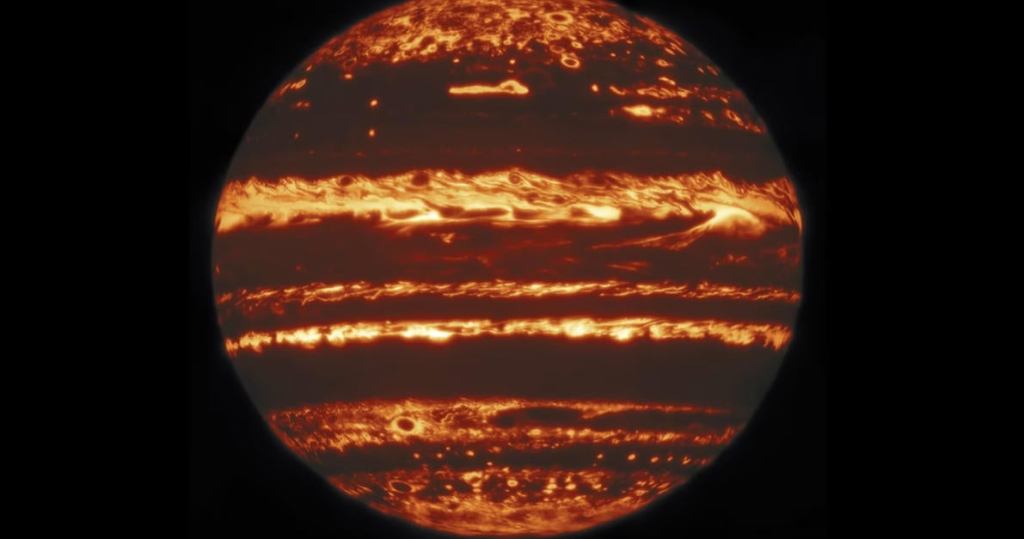Is Jupiter a planet-eater? A new report suggests the planet actually behaves like some villain out of a Marvel movie, by consuming whole planets. In fact, the report goes so far as to say that Jupiter achieved its massive size (300 times bigger than Earth) by consuming other worlds in order to build itself up into the biggest planet in our entire solar system, approximately twice the size of all the other planets in this system, combined.
Videos by ComicBook.com
Astronomy & Astrophysics published the new report on Jupiter, claiming that there’s evidence that the planet has remains of other planets contained within it. That’s something of a significant step forward, as the theory that Jupiter is an amalgamation of other planet bodies has been out there for a while.
NASA’s Juno space probe captured a unique look at Jupiter recently, during a moment where Jupiter’s gases temporarily parted enough to give the probe a clearer look at the planet’s core. Now scientists can better speculate about how Jupiter absorbed planetesimals and other space rock to fuel its growth.
The theory is an intriguing one, that makes you wonder what our solar system must’ve looked before Jupiter treated it like a cosmic buffet Earth could have had a lot more company…
Marvel fans will no doubt have jokes about how Jupiter must actually be Galactus or a Celestial during their signature hibernations – and what happens if it should “wake up” again. Suddenly makes you glad Earth is over 700 million km away…

Here are a few details from NASA’s report (NOTE: it’s not an easy, casual, read):
Our results imply that Jupiter continued to accrete heavy elements in large amounts while its hydrogen-helium envelope was growing, contrary to predictions based on the pebble-isolation mass in its simplest incarnation (Lambrechts et al. 2014), favouring instead planetesimal-based or more complex hybrid models (Alibert et al. 2018; Guilera et al. 2020). Furthermore, the envelope did not mix completely during the planet’s subsequent evolution, not even when Jupiter was young and hot (Vazan et al. 2018).
Our result clearly shows the need for further exploration of non-adiabatic interior models for the giant planets, and it provides a base example for exoplanets: a non-homogeneous envelope implies that the metallicity observed is a lower limit to the planet bulk metallicity. Therefore, metallicities inferred from remote atmospheric observations in exoplanets might not represent the bulk metallicity of the planet.
You can read the full report on Jupiter HERE.









